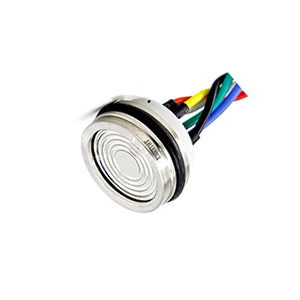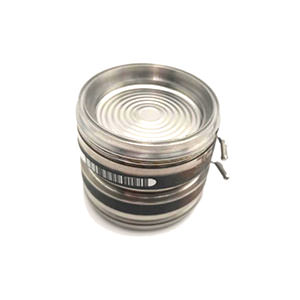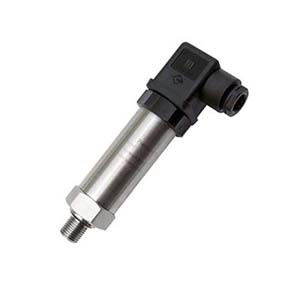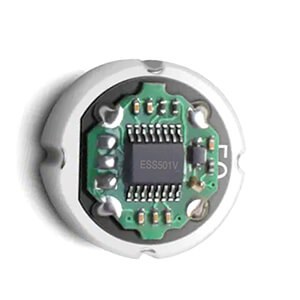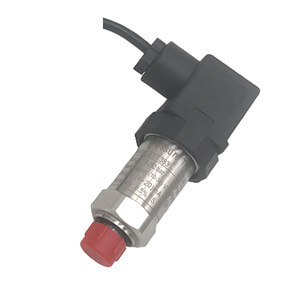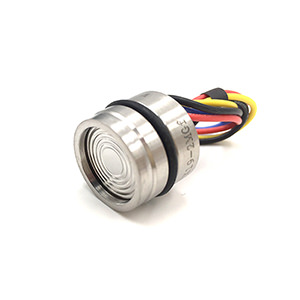What are MEMS?
MEMS stands for Micro-Electro-Mechanical Systems, and they are miniaturized devices that integrate mechanical and electronic components onto a single substrate, typically made of silicon. MEMS devices are extremely small, often with dimensions ranging from a few micrometers to a few millimeters.
MEMS technology has revolutionized the field of sensors, including pressure sensors, by enabling the manufacturing of highly accurate, reliable, and cost-effective devices.
In the context of pressure sensors, MEMS technology has enabled the development of highly accurate and compact devices. MEMS pressure sensors typically use a thin, flexible diaphragm or membrane as the sensing element, which deforms in response to applied pressure. This deformation is then detected and converted into an electrical signal using various transduction mechanisms, such as piezoresistive, capacitive, or optical techniques.
MEMS pressure sensors have found widespread applications in various industries, including automotive (tire pressure monitoring, manifold pressure sensing), medical (blood pressure monitoring, respiratory devices), consumer electronics (altitude sensing, gesture recognition), and industrial automation (process control, level measurement).
The rise of MEMS
The rise of MEMS (Micro-Electro-Mechanical Systems) technology has been a significant milestone in the field of sensors and miniaturized devices.
Technological Advancements
The development of MEMS was made possible by advancements in microfabrication techniques derived from the semiconductor industry. The ability to precisely sculpt and pattern microscopic structures on silicon wafers opened up new possibilities for creating miniaturized mechanical and electromechanical systems.
Silicon Micromachining
The introduction of silicon micromachining processes, such as bulk micromachining and surface micromachining, enabled the fabrication of complex MEMS structures with high precision and repeatability. These techniques allowed for the integration of mechanical elements, like membranes, cantilevers, and gears, with electronic circuits on the same silicon substrate.
Commercialization and Widespread Adoption
The commercialization of MEMS technology began in the 1990s, driven by the automotive industry’s demand for low-cost, reliable sensors for applications like airbag deployment and tire pressure monitoring systems. This early adoption paved the way for the widespread use of MEMS in consumer electronics, industrial automation, and various other sectors.
Miniaturization and Integration
MEMS devices offered unparalleled miniaturization, enabling the integration of multiple functionalities into a single chip. This made it possible to develop highly compact and efficient sensors, actuators, and systems, leading to smaller and more powerful devices in areas like smartphones, wearables, and medical devices.
Cost Effectiveness
The batch fabrication techniques used in MEMS manufacturing, similar to those in the semiconductor industry, allowed for the mass production of MEMS devices at relatively low costs. This cost-effectiveness, combined with their small size and high performance, made MEMS an attractive choice for a wide range of applications.
Enabling New Applications
The unique capabilities of MEMS technology have enabled the development of entirely new applications and products. For example, MEMS accelerometers and gyroscopes have revolutionized motion sensing and navigation, while MEMS microphones have improved audio quality in consumer electronics and hearing aids.
Multidisciplinary Collaborations
The success of MEMS has been driven by collaborations between various disciplines, including electrical engineering, mechanical engineering, materials science, and nanotechnology. This multidisciplinary approach has fostered innovation and the development of increasingly sophisticated MEMS devices.
As MEMS technology continues to evolve, with improvements in materials, fabrication processes, and integration with other technologies like CMOS and NEMS (Nano-Electro-Mechanical Systems), its applications are expected to expand further, driving innovation across numerous industries and enabling new frontiers in sensing, actuation, and miniaturized systems.
“There was a gentleman at Bell Telephone Labs named Charles Smith, who saw that there is a piezoresistive effect in silicon, meaning that if you strain it, you’ll see a change in resistance,” said Huff. “Not too long after that, people started gluing pieces of silicon to steel plates as strain gauges. Later, we learned that you could do what’s called an anisotropic etching of silicon, allowing you to make thin membranes out of silicon with controlled dimensions, which were important for mechanical types of sensors such as pressure transducers.”
Following these initial discoveries, this early version of MEMS technology was further refined and adopted for commercial use in the automotive and medical industries.
“People soon realized they could put the silicon strain gauges directly into the diaphragm itself, and when that happened, these devices started hitting the market quite quickly,” said Huff. “They were used as pressure transducers for automobile applications—mainly manifold air-pressure sensing—and medical applications. When I worked for a large healthcare company, we discovered you could replace a manometer—basically a macro-scale pressure sensing device— with a silicon transducer, which are a lot cheaper and more reliable. Plus, they’re disposable, so you didn’t have to sterilize them after each use.”
Modern MEMS
Over the next few decades, the MEMS industry created myriad new versions of this miniaturized technology for use in a wide range of different sectors. While the MEMS market is currently expanding like never before, Huff believes we’ve only scratched the surface of the technology’s potential applications.
The future of MEMS (Micro-Electro-Mechanical Systems) technology is poised to be even more advanced, sophisticated, and ubiquitous.
Smaller Form Factors and Higher Integration
MEMS devices will continue to shrink in size, enabling even greater miniaturization and integration into smaller spaces. This will be achieved through advancements in microfabrication techniques, such as nanoscale patterning and three-dimensional (3D) structuring. Highly integrated MEMS systems-on-chip (SoCs) will combine multiple sensors, actuators, and electronic circuits on a single chip, further enhancing their capabilities and reducing overall system footprint.
Advanced Materials and Structures
Modern MEMS will incorporate new and innovative materials beyond traditional silicon, such as piezoelectric materials, shape memory alloys, and advanced polymers. These materials will enable the development of MEMS devices with improved performance, greater sensitivity, and enhanced functionality. Additionally, the incorporation of nanostructures and metamaterials will lead to unique properties and capabilities, such as tunable optical or mechanical characteristics.
Improved Power Efficiency and Energy Harvesting
Future MEMS devices will prioritize power efficiency and energy harvesting capabilities. Ultra-low-power MEMS sensors and actuators will be developed, reducing their overall energy consumption and enabling longer operational lifetimes for battery-powered or self-powered devices. Additionally, MEMS-based energy harvesters will be integrated to scavenge energy from sources like vibrations, heat, or light, enabling self-sustaining and autonomous systems.
Intelligent and Adaptive MEMS
Artificial Intelligence (AI) and Machine Learning (ML) will play a significant role in modern MEMS. MEMS devices will incorporate on-chip intelligence and algorithms for data processing, pattern recognition, and adaptive behavior. These intelligent MEMS will be able to self-calibrate, optimize their performance, and even predict potential failures, enabling more reliable and efficient operation.
Biocompatible and Implantable MEMS
The healthcare industry will see a rise in biocompatible and implantable MEMS devices for medical applications. These MEMS will be designed to operate within the human body, enabling continuous monitoring of physiological parameters, targeted drug delivery, and even minimally invasive surgical procedures. Biocompatible materials and coatings will be essential for their safe and effective use.
MEMS-Based Internet of Things (IoT) Devices
MEMS technology will be a driving force behind the Internet of Things (IoT) revolution. MEMS sensors and actuators with embedded wireless connectivity and low-power operation will enable the development of ubiquitous IoT devices for applications such as environmental monitoring, smart homes, and industrial automation.
Hybrid and Heterogeneous Integration
Modern MEMS will increasingly involve hybrid and heterogeneous integration, where MEMS devices are combined with other technologies, such as CMOS (Complementary Metal-Oxide-Semiconductor) circuits, optoelectronics, and microfluidics. This integration will enable the development of multifunctional systems with enhanced capabilities and performance, enabling new applications in areas like lab-on-a-chip devices, optical MEMS, and microrobotic systems.
As MEMS technology continues to advance, it will become more pervasive, intelligent, and seamlessly integrated into our daily lives, driving innovation across various industries and enabling new possibilities in sensing, actuation, and miniaturized systems.
Looking Ahead
According to Huff, while MEMS is currently an important segment of the vacuum market, due to the fact that the industry often uses dated and rebuilt vacuum equipment from the semiconductor field, its full potential as a growth driver for the vacuum industry has yet to be realized.
“I think that the growth of MEMS technology is definitely having a positive effect on the vacuum industry,” said Huff. “I won’t say it’s having a really huge effect yet because the MEMS guys are still using older IC equipment for the most part. So if you ask if this is good for the vacuum industry, I would say, ‘Yes.’ But is it going to make everyone in the vacuum industry a billionaire overnight? No.”
That said, with the recent surge in demand for MEMS technology from the Consumer Electronics market and the potential for its use in wearable devices and other advanced sensing technology, the MEMS industry could soon become much more integrated into the mainstream. And whether we realize it or not, MEMS is already a big part of our daily lives—and it stands to become even more so in the future.
“If I had to guess, I’d say the average person in the US probably owns around 10 MEMS devices right now,” said Huff. “They might not know they own them, but they do. You have a few in your cell phone, a few in your car… but if you had people using wearable devices and other applications controlling your house and office environment and things like that, it’s kind of easy to envision that this number could grow to a few hundred or even a thousand sensors per person. If you imagine all of the possible applications, then this could become a much different market at that point.”
With such vast potential for increased growth and revenue, it seems highly likely that MEMS fabrication will eventually become much more standardized. At that point, the rapid commercialization of MEMS technology that many have long predicted was just around the corner will finally come to fruition. And if this happens, the effect MEMS has on the vacuum industry could become exponentially greater.
“If we can get this industry to the point where it’s much more predictable, cost effective, and time effective for developing products,” said Huff, “then I think it would be a complete game changer, not only for MEMs, but for a lot of other industries, including vacuum.”

